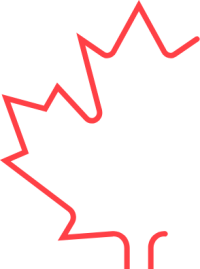Bruyère Research Institute (Bruyère) is seeking a solution to reduce the risk of patients and residents developing pressure ulcers (PUs), which are a significant health concern and a P1 priority for Ontario hospitals. Please note this is a joint call between the CAN Health Network and the Centre for Aging + Brain Health Innovation (CABHI), please see below for more information.
Bruyère is posting this Call for Innovation to seek out qualified Ontario* companies who can meet the desired outcomes. Bruyère and CAN Health reserves the right to not move forward with this project at its full discretion and in particular if there are no qualified Ontario companies that can reasonably meet the desired outcomes.
*Business must be registered in Ontario in order to qualify for this project.
The Centre for Aging + Brain Health Innovation (CABHI), located at Baycrest in Toronto, Canada, is a solution accelerator focused on driving innovation in the aging and brain health sector. CABHI has partnered with the CAN Health Network to launch a joint program call to accelerate the adoption of a company that is reducing the occurrence of pressure ulcers.
CABHI will support the selected company through its Mentorship, Capital, and Continuation program (MC²), a first-of-its-kind funding program dedicated to supporting early-stage Ontario health tech companies.
The selected company may receive up to $100,000 CAD in investment from CABHI via an unsecured venture debt or Post-money SAFE agreement to help achieve specific business milestones over a 12-month period. The selected company will work on achieving business milestones in parallel with their CAN Health Network Project.
CABHI will share additional terms, conditions, and obligations of funding after the company has been selected. CABHI reserves the right to decline, modify or annul this funding offering at any time, without incurring any liability.
Current standard risk assessments do not adequately identify the risk of patients developing pressure ulcers (PUs), although PUs pose considerable harm to patients, increase hospital expenses, and decrease staff workplace experience.
Bruyère is seeking a solution that will reduce PUs through a bed monitoring system that informs staff of the positioning and turning of patients, and alerts staff of patients at risk of developing PUs.
Objectives:
- Reduce prevalence of PUs at Bruyère
- Improve patient care and satisfaction in those patients with PUs
- Decrease hospital expenses as a result of decreasing PUs among Bruyère patients
- Improved staff workplace experience and satisfaction as a result of better informed decision making for patient repositioning
Essential (mandatory) outcomes
The proposed solution must:
- Direct clinical staff to patients that are flagged as being at risk of developing PUs based on bed positioning and other data points such as mobility, moisture, posture, and temperature.
- Independent central dashboard that monitors patient positioning via mobility, moisture, posture, and temperature and provides alerts to clinical staff on when to reposition patients at risk of developing a PU.
- The alerts are AI-driven, informed by guidelines and best practices relating to PU prevention, and indicate the reason (e.g. moisture detected)
- The solution has previously been tested and validated in a clinical setting demonstrating the solution’s ability to provide accurate alerts to clinical staff on data points such as mobility, moisture, posture, and temperature
- Integrates into staffs’ current workflow in order to be widely accepted and adopted by staff
- Patient positioning data flows seamlessly from bed monitoring system to central dashboard
- The dashboard clearly displays alerts, and their indication, in a user-friendly format that clinical staff can easily interpret and action
- A 30% reduction in pressure ulcers in our patients with a high risk of developing pressure ulcers
- Enable cost savings of greater than $1500 per year per digital bed cover as a result of the reduction in pressure ulcers
Additional outcomes
- Dashboard includes a timer function that begins once alert is triggered, informing clinical staff on how long the patient has been waiting for care (repositioning)
- Receive a patient satisfaction rate of over 70%, captured in a patient survey (e.g. Comfort)
- Receive a staff satisfaction rate of 75% or more, captured in a staff survey evaluating:
- Ease of integration into workflow
- Usability of the dashboard alert system
- Helpfulness of the alerts for maintaining best practices
- Any self-reported time savings (ex. not having to check patients for urinary incontinence as dashboard reports moisture)
The maximum duration for a project resulting from this Challenge is: 9 months
Pressure ulcers (PUs) are a significant health concern for patients across Canada. Although PUs cause considerable harm to patients, hinder functional recovery, and have been associated with an extended length of stay, sepsis and even mortality, the current standard risk assessment does properly assess risk of developing PUs. A literature review done in Canada in 2004 found that the overall prevalence of pressure ulcers across all institutions studied was 26%. With an aging population, this risk will only increase. Furthermore, hospitals have a direct P1 priority that they need to report to the ministry on the number of PUs developed by their patients, PUs have a large negative impact on a patient’s care and ability to recover, and are a large financial burden. Bruyère is seeking a solution that will reduce PUs that can effect workplace experience, hospital expenses, and patient care.

